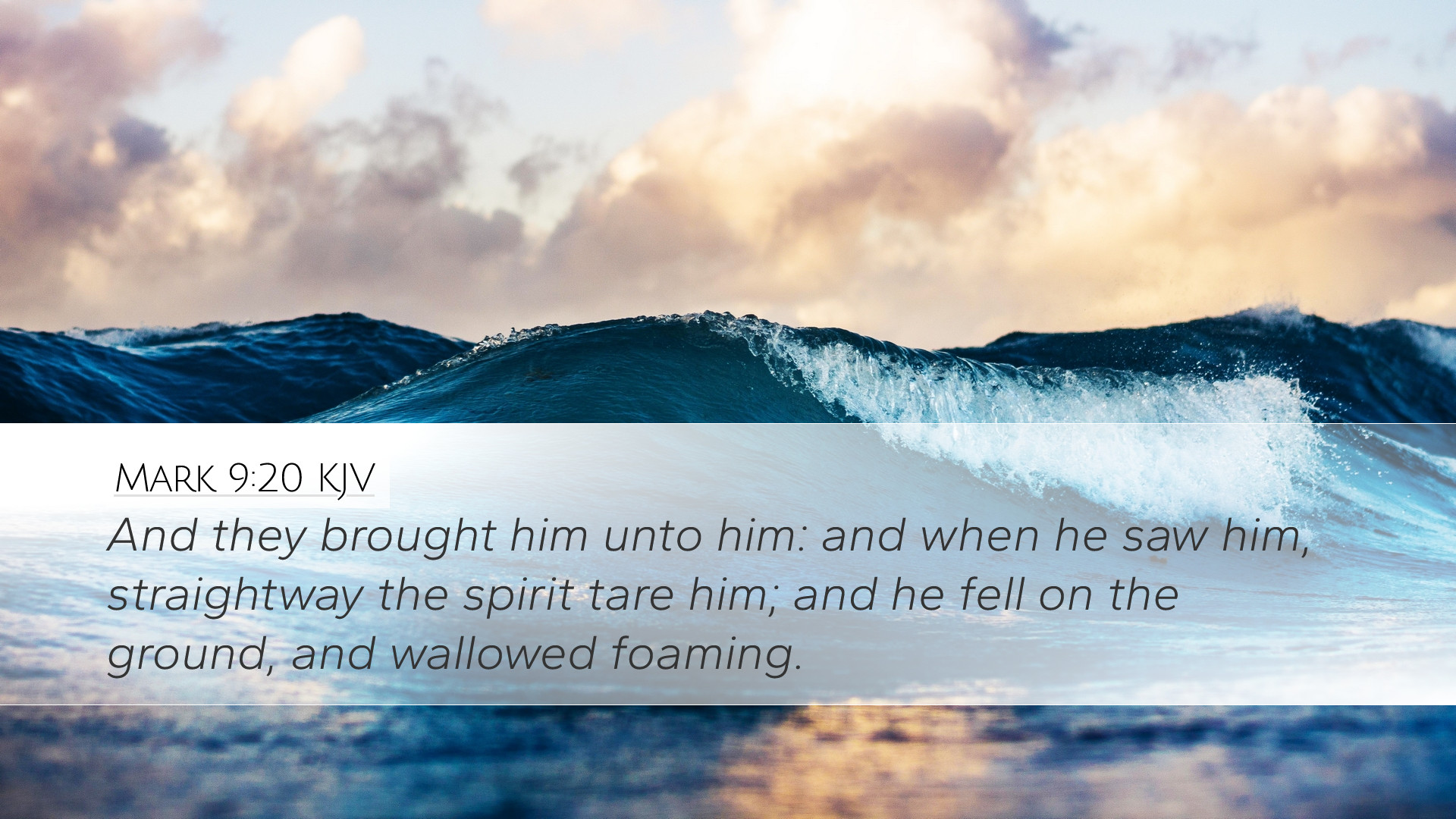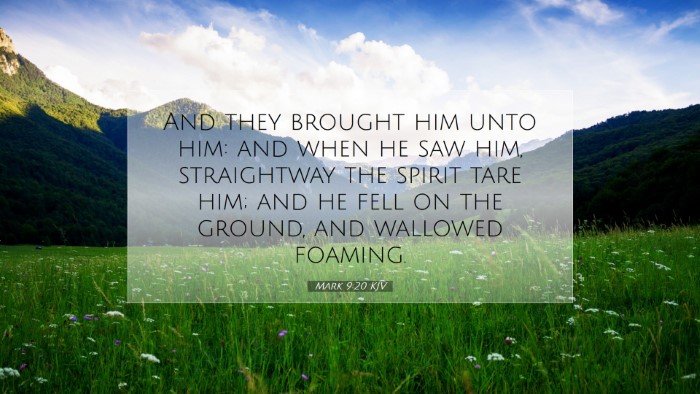Commentary on Mark 9:20
Verse Text: "And they brought him unto him: and when he saw him, straightway the spirit tare him; and he fell on the ground, and wallowed foaming."
Introduction
This poignant verse captures a moment of profound spiritual struggle and human despair. It reveals the dramatic encounter between Jesus and a possessed boy, highlighting the misery inflicted by demonic forces, as well as the authority of Christ over these malevolent beings. Here, we will explore various insights from public domain commentaries to enrich our understanding of this text.
Contextual Background
In this passage, Jesus returns from the Mount of Transfiguration and is confronted by a distraught father whose son suffers from seizures caused by a "dumb spirit." This episode demonstrates the nature of evil, human helplessness, and the compassion of Christ. Matthew Henry notes that this scene conveys the desperation of humanity in the face of spiritual oppression.
Understanding the Possession
Albert Barnes elucidates the nature of the spirit that afflicted the boy. He emphasizes that the child was not merely suffering from physical ailments but was under the influence of a powerful evil spirit. This understanding of spiritual possession serves to remind us of the real and present darkness that opposes God's work.
The Father’s Desperation
The father's plea, as illustrated in the preceding verses, underscores the depth of his desperation. Adam Clarke highlights that the father brought the boy to Jesus after the disciples could not cast the spirit out. This incident reflects both the limitations of the disciples and the real need for reliance on Christ alone.
Analysis of the Verse
In Mark 9:20, we observe several key elements:
- The Reaction of the Spirit: "when he saw him, straightway the spirit tare him" - This instantaneous reaction signifies the recognition of Jesus’ divine authority. Both Barnes and Clarke affirm that the evil spirit was agitated by the presence of Christ, further emphasizing Christ's supremacy over demonic forces.
- The Physical Manifestation of Suffering: "he fell on the ground, and wallowed foaming" - This graphic description illustrates the intensity of the boy’s suffering. Henry reflects on this as a tragic display of the torment a soul can endure. Such vivid imagery serves as a reminder of the toll that sin and evil can take on individual lives.
Theological Implications
The dynamics of this encounter reveal important theological truths, including:
- Christ’s Authority: The immediate reaction of the evil spirit underscores Christ's authority over unclean spirits. As commented by Clarke, this reflects Jesus as the ultimate victor over evil.
- The Human Condition: The verse encapsulates the struggle of humanity against spiritual bondage. Henry points out that the afflicted boy represents all of humanity trapped in the shackles of sin and suffering.
- The Call to Faith: The unfolding narrative calls for faith in Jesus to overcome great trials. Barnes notes that in the face of despair, it is essential to turn to Christ, as He alone can redeem and restore.
Pastoral Application
This passage provides rich content for pastoral affirmation and guidance. Here are key takeaways for leaders and ministers:
- Encouragement in Suffering: Pastors can draw upon this text to remind congregants of Christ’s understanding and compassion in their suffering. Just as Jesus spoke tenderly and decisively into the boy's life, He does the same for us.
- Faith in Action: Believers are encouraged to bring their struggles to Jesus, acknowledging that He is the only one capable of delivering from spiritual oppression. The role of the church is to facilitate this connection.
- Awareness of Spiritual Warfare: This narrative invites congregations to acknowledge the reality of spiritual warfare. As highlighted in Clarke's commentary, understanding our adversary can lead to greater reliance on God's power.
Conclusion
Mark 9:20 captures a moment in Christ’s ministry that showcases His power over evil and His deep compassion for human suffering. By analyzing the context, the reaction of the spirit, and the theological implications of the text, we gain a clearer picture of both our need for a Savior and the assurance that He is present in our darkest hours. As believers, we are invited not only to bring our struggles to Him but to also proclaim His authority in our lives and communities.


